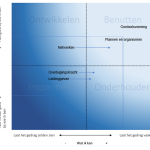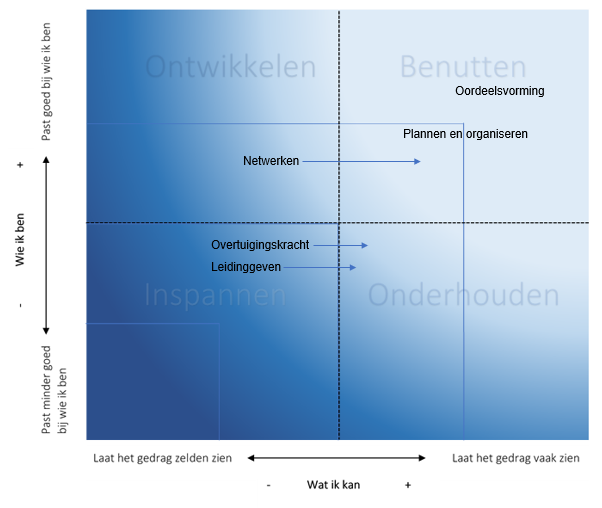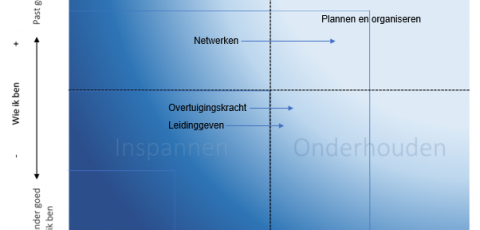The individual competence matrix explained

Assessing the development of specific behavioural competencies
Our clients often ask us whether we can also estimate the developability of specific behavioural competencies. This is certainly important for starting employees who are at the beginning of their career and who have had less professional training. Both from a business and a social point of view. After all, from a business perspective you want to know whether investments in training, coaching or education will be sufficiently profitable.
We also know that the need to be competent (to feel capable and effective at what you do) is a basic psychological need that can be frustrated by performing work or development activities that are not adequately suited to your talents. Brain research shows that people then no longer learn and develop well. Hardly any new neural connections are formed as a result of stress. On the basis of neuroscience it can be stated that it is precisely your strong points that you can develop. Neuroscientist Joseph LeDoux said: "The growth of the brain is like new buds on an existing branch, not so much like new branches."
Who I am and what I can
In order to provide development recommendations that are good for the well-being of people as well as for the performance of the organization, we show during assessments what someone is currently capable of doing (the horizontal axis 'what I can do') and to what extent a competency fits in with someone's talent base (the vertical axis 'who I am'). The 'what I can do' axis shows the extent to which the participant is already able to apply the relevant competence effectively. The more the scores are to the right, the more effective the competence is shown and vice versa. The 'who I am' axis indicates a talent indicator and thus the growth potential of this competency. Scores at the bottom of the axis indicate that the development potential is low. If the score is high on the axis then the developmental probability is high.
Utilize, maintain, leverage and develop
The scores on the two axes are determined separately. By combining them, four quadrants arise: 'Utilize', 'Maintain', 'Inspire' and 'Develop'. The competencies in the quadrant 'Utilize' concern the 'natural competencies'. These are not only strongly displayed, but also fit naturally with the personality and capabilities of the participant. The competences in the quadrant 'Maintain' concern 'learned competences'. These are shown sufficiently to well, but can 'wear out' in the course of time, because they are less secured by supporting qualities and capacities. It is therefore important to maintain this competence well, for example with training or courses. The competencies in the 'Effort' quadrant are difficult to develop further. In general, it is wise to avoid relying on them too much. Competencies in the 'Develop' quadrant are 'upcoming competencies' that require focused development. The behavior is still (too) ineffective, but the growth potential is average to above average: therefore it offers perspective to start investing in it.

A practical example of the matrix
In the above illustration, the matrix shows that the person in question comes into his or her own when it comes to properly assessing issues and implementing solutions by effectively planning and organizing. The competency 'networking' may be strengthened and he or she also has the necessary qualities for this. Leadership and persuasion are less suited to this person. The arrows indicate that further development is possible (e.g. by learning techniques through intensive training). However, with regard to leadership and persuasiveness, the question must be asked whether this effort is advisable. Considering both the business interest as well as the interest of well-being and work happiness.
See also:










































